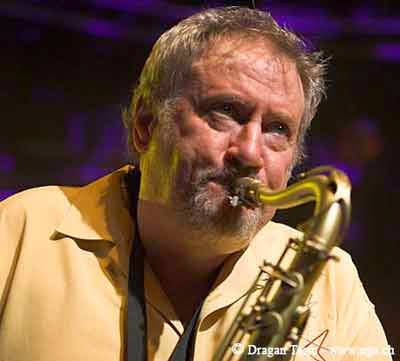
American media artist and performer. His practice spans a broad range of media including sculpture, photography, neon, video, drawing, printmaking, and performance. Between 1966 and 1970 he made several videos, in which he used his body to explore the potentials of art and the role of the artist, and to investigate psychological states and behavioural codes.
His Self Portrait as a Fountain (1966) shows the artist spouting a stream of water from his mouth.
Art Make-Up (1967) - video in which Nauman slowly covers his face and upper torso with white, then pink, then green, then black makeup, until by the end he looks like a negative image.
Pacing Upside Down (1969) - With his arms held over his head, hands crossed, Nauman is moving jerkily around a perimeter defined by a square drawn on the studio floor, filmed by a fixed camera, placed upside down.

Bruce Nauman, Venice Fountains - 0:27
Bruce Nauman – ‘The True Artist Helps the World’ | TateShots (7:14)
Bruce Nauman: "Art Make-Up" (1967) - 0:27
Bruce Nauman Pinch Neck 1968 - 2:08
following Bruce Nauman around my shed - 1:03
Bruce Nauman, Square Depresssion, 2007, Munster - 1:28
Pursuit by Bruce Nauman - 0:31
Bruce Nauman Tries to Write in Portuguese Using Opticalfiber - 0:59

American trumpeter and composer, working primarily in the fields of avant-garde jazz and free improvisation. Smith was born in Leland, Mississippi. He started out playing drums, mellophone, and French horn before he settled on the trumpet. He played in various R&B groups and by 1967 became a member of the AACM and co-founded the Creative Construction Company, a trio with Leroy Jenkins and Anthony Braxton.
In the 1970s, Smith studied ethnomusicology at Wesleyan University. He played again with Anthony Braxton, as well as recording with Derek Bailey’s Company. In the mid-1980s, Smith became Rastafarian and began using the name Wadada. In 1993, he began teaching at Cal Arts, a position he held until 2014. In addition to trumpet and flugelhorn, Smith plays several world music instruments, including the koto, kalimba, and atenteben (Ghanaian bamboo flute). He has also taught courses in instrument making. His compositions often use a graphic notation system he calls “Ankhrasmation”, which he developed in 1970.
Smith’s Golden Quartet (with which he has released several albums) originally featured Jack DeJohnette on drums, Anthony Davis on keyboards, and Malachi Favors on bass. After several iterations, the Golden Quartet now features Pheeroan akLaff on drums, John Lindberg on bass, and Davis on piano.

Wadada Leo Smith Golden Quartet - 5:13

American jazz saxophonist. In addition to his primary instrument, baritone sax, he has played tenor sax, soprano sax, clarinet, and flute. His first notable work was with Slide Hampton (1962) and Maynard Ferguson (1963–1965). Then from 1966 to 1967, Cuber worked with George Benson. He can be heard playing in Frank Zappa’s group in the mid-1970s, including the album Zappa in New York.
As a side man, he has played with B. B. King, Paul Simon, and Eric Clapton. He has been a member of the Mingus Big Band since its inception in the early 1990s.

Ronnie Cuber baritone sax, Bill Evans, Randy Brecker - 3:20
participants have been selected from the pages of wikipedia and youtube